
Director/screenwriter Julia Hart (l.) and actress Gugu Mbatha-Raw on the set of Fast Color, 2017. (Photo: Tumblr)
Here are twenty-two new movies due to be released in theaters or via other viewing platforms this March, all of which have been directed and/or photographed by women. These titles are sure to intrigue cinephiles and also provoke meaningful discussions on the film world, as well as the world in general.

MARCH 1 (streaming on Hulu): I, Dolours (dir. Maurice Sweeney) (DP: Kate McCullough) – POV Magazine review by Chelsea Phillips-Carr: “In 2010, former Irish Republican Army member Dolours Price gave a series of interviews, under the agreement that they could only be released after her death. Most famous for her involvement in the bombing of London’s Old Bailey in 1973, an attack which injured hundreds of people and killed one, Dolours’ story is expanded upon in Maurice Sweeney’s documentary, where reenactments illustrate her words as she details her childhood, radical experiences, incarceration, and beyond.
“With such controversial subject matter, I, Dolours has all the appeal of being let in on a secret. Intimately, we gain access to forbidden knowledge, the indulgence of gossip being grounded by the severity of real events. Dolours is an engaging speaker, and her passion comes through as she recounts her upbringing within a staunchly republican family, as well as her determination and commitment to fight for the rights of her people.
“But Sweeney’s doc takes an impartial perspective. The film allows Dolours to discuss her life as she sees it. We hear what drove her to acts of terrorism, and how she could justify violence, rationalizing her radicalism. We also watch, with great sympathy, as she is put into prison, taking on a 200-day hunger strike, which is extended by force-feeding. Simultaneously, we receive the facts of the violence she participated in, especially the ‘disappearing’ of other IRA members deemed to be traitors or informers. In particular is the killing of Jean McConville, a widowed mother of ten. Archival footage of her bewildered children is horrifying to contemplate especially after hearing Dolours’ description of personally driving the condemned woman to the place where she would be executed.
“There is discomfort in this whiplash of perspectives. In showing both sides bluntly, I, Dolours is able to depict ‘The Troubles’ in Northern Ireland as an incredibly complex set of issues. The film shows understanding and compassion towards Dolours’ republicanism, and never portrays Britain as faultless in the conflict. It equally shows the violence of the IRA (towards innocent people, towards their own people), and does not allow these acts to be justified by the greater struggle for Irish independence. In this way, I, Dolours is able to handle a loaded issue with respect, treating its source with dignity but without falling into reverence, exploring the history without accepting it.”
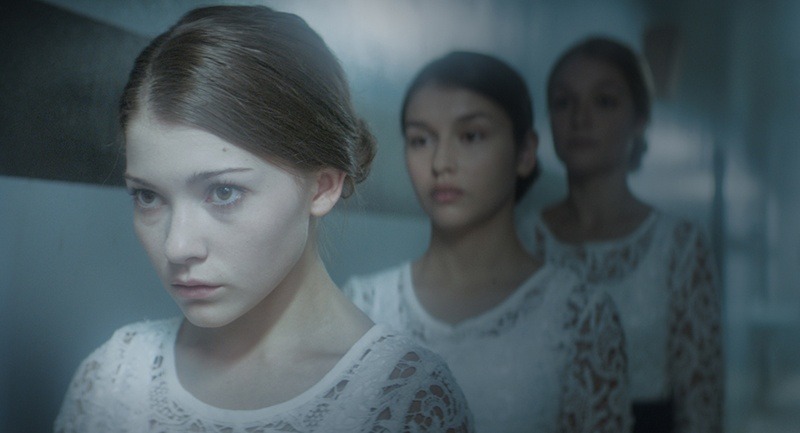
MARCH 1 AND AFTERWARD (select cities) (also VOD & digital): Level 16 (dir. Danishka Esterhazy) – IMDb synopsis: “Sixteen-year-old Vivien is trapped in The Vestalis Academy, a prison-like boarding school, keeping to herself and sticking her neck out for no one. Until she is reunited with Sophia — the former friend who betrayed her. Together the girls embark on a dangerous search to uncover the horrifying truth behind their imprisonment. Soon running for their lives, the girls must save themselves or die trying.”
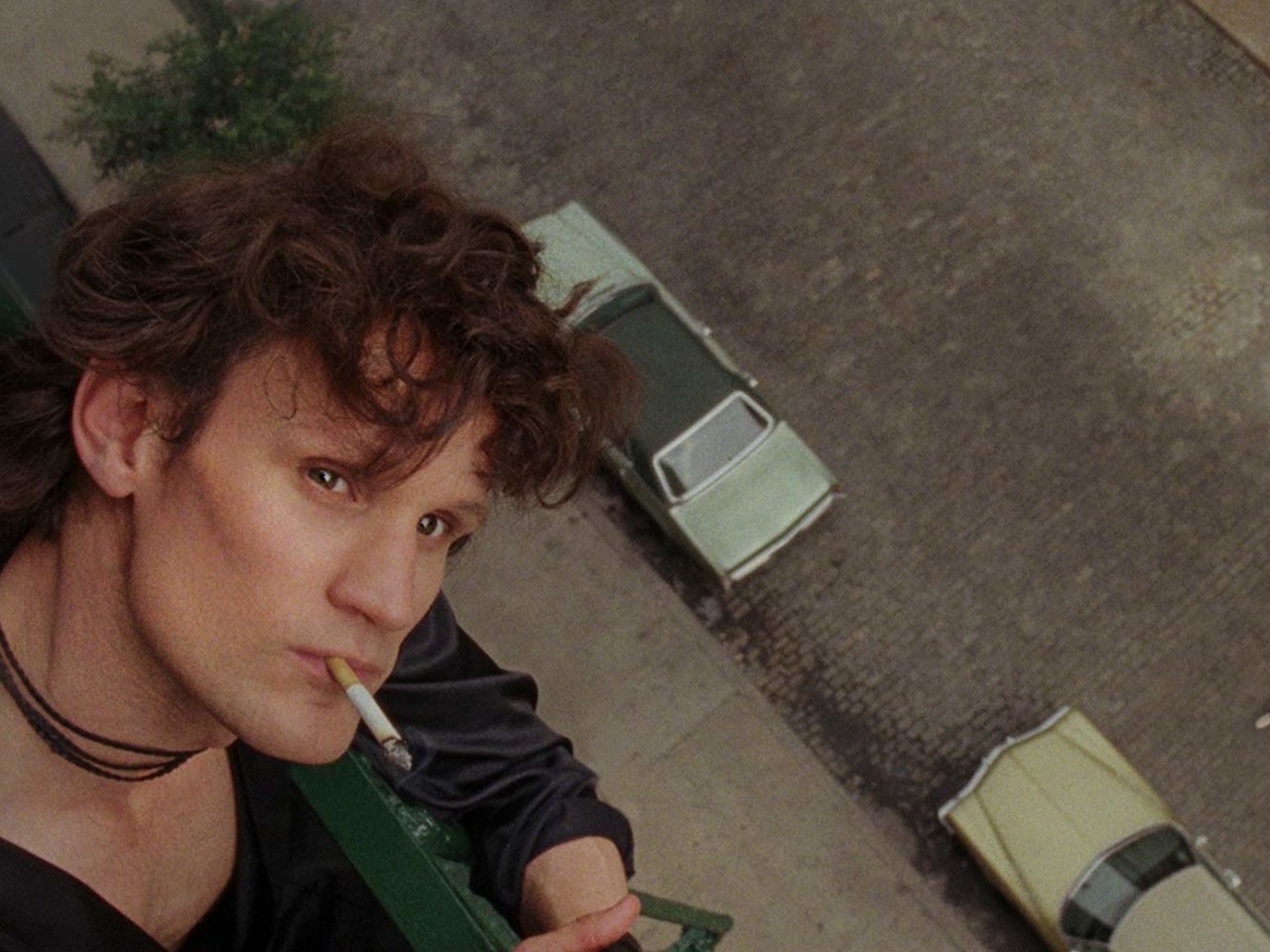
MARCH 1: Mapplethorpe (dir. Ondi Timoner) (DP: Nancy Schreiber) – Samuel Goldwyn Films synopsis: “Robert Mapplethorpe (Matt Smith) is arguably one of the most important artists of the 20th century. Mapplethorpe discovered himself both sexually and artistically in New York City throughout the 70’s and 80’s. The film explores Mapplethorpe’s life from moments before he and Patti Smith (Marianne Rendón) moved into the famed Chelsea hotel, home to a world of bohemian chic. Here he begins photographing its inhabitants and his new found circle of friends including artists and musicians, socialites, film stars, and members of the S&M underground Mapplethorpe’s work displayed eroticism in a way that had never been examined nor displayed before to the public. The film explores the intersection of his art and his sexuality along with his struggle for mainstream recognition. Mapplethorpe offers a nuanced portrait of an artist at the height of his craft and of the self-destructive impulses that threaten to undermine it all.”

MARCH 1 (LA): This Magnificent Cake! (dirs. Emma De Swaef and Marc James Roels) – GKIDS synopsis: “An official selection at Cannes Directors’ Fortnight, Toronto International Film Festival and Telluride Film Festival, This Magnificent Cake! (Ce magnifique gâteau!) is an unforgettable work of stopmotion animation exploring the bitter milieu of Belgium-occupied Congo. In the late 19th century, keen to compete with other European imperial powers on the continent, King Leopold II of Belgium proclaimed, ‘I do not want to miss a good chance of getting us a slice of this magnificent African cake.’ The subsequent occupation of the Congo would come to attract a contingent of servants, merchants and miscellaneous bourgeois driven by everything from insatiable greed to existential fear. From the intimate stories of these characters — many of whom pass through a luxury hotel in the middle of the jungle – emerges a greater narrative concerning the imperialist mentality. In a film by turns surreal, darkly comic and brutal, directors Marc James Roels and Emma De Swaef ultimately turn their critical gaze on the colonists themselves in a work of stunning, mysterious beauty.”

MARCH 8: Captain Marvel (dirs. Anna Boden and Ryan Fleck) – Synopsis from the film’s official website: “Set in the 1990s, Marvel Studios’ Captain Marvel is an all-new adventure from a previously unseen period in the history of the Marvel Cinematic Universe that follows the journey of Carol Danvers (Brie Larson) as she becomes one of the universe’s most powerful heroes. While a galactic war between two alien races reaches Earth, Danvers finds herself and a small cadre of allies at the center of the maelstrom.”

MARCH 8: Gloria Bell (dir. Sebastián Lelio) (DP: Natasha Braier) – Variety’s Toronto International Film Festival review by Peter Debruge: “Sebastián Lelio’s Gloria Bell is the second film this year to end with the Laura Branigan song ‘Gloria’ — the kind of high-energy empowerment anthem that recasts its leading lady in a different light — the other being Netflix’s recent Gloria Allred docu Seeing Allred. Speaking of recasting leading ladies, it also happens to be the second of Lelio’s films to close with that song, although there’s a perfectly good explanation for that: Gloria Bell is a nearly scene-for-scene remake of the A Fantastic Woman director’s 2013 single-woman drama, this time in English and featuring Julianne Moore in the role that earned Paulina García the Berlin Film Festival’s best actress prize.
“Many were skeptical when the project was announced, much as they were to the news that Jack Nicholson might star in an American version of Toni Erdmann, and yet Moore insisted in this case that if she were to play the role, Lelio must agree to direct. And so we get a film that shares the original’s generous view of the title character — of all its characters, really — along with a great many of its creative choices. But even with the same director and nearly the same script, Gloria and Gloria Bell are hardly the same movie, in the way that no two stagings of Hamlet can be the same when cast with different leading men. And it’s easy to imagine audiences who showed no interest in a Spanish-language version of this story responding to what Moore does with the role when A24 releases it.
“No one ever asks Gloria Bell her age (rather, they pose that more complimentary of L.A. questions, ‘Have you had work done?’), though the still-gorgeous fiftysomething has perhaps a decade left till retirement, and has been divorced for roughly a decade from husband Dustin (Brad Garrett), now remarried (to Jeanne Tripplehorn), with two grown kids (Michael Cera and Caren Pistorius) whose slightly expanded roles are one of the film’s improvements.
“As before, Gloria Bell opens in a singles bar — the kind that caters to those who no longer get carded — where Gloria, who loves to dance, sits alone at the bar with her back to the audience. She’s not exactly the type who stands out in a crowd, and yet the camera notices her — which is precisely the thing that sets Lelio’s sensibility apart from other filmmakers.
“It’s a simple fact of modern society that in their 20s, people naturally tend to be egotists, perceiving themselves as the center of the universe, whereas Gloria has reached the point at which she doesn’t really see herself as the main character in her life anymore, instead defining herself in relation to others — as a parent, friend, or co-worker. Lelio corrects this, turning the attention back on this fantastic woman, in much the same way he recognized a Chilean trans character as the rightful protagonist of his Oscar-winning A Fantastic Woman.
“There’s a risk that such sensitivity can come across as patronizing, which sort of happens in the 2013 film. One can almost feel a younger Lelio asking the audience to acknowledge the sheer humanism displayed in making a movie about a sad, single-again mid-life woman. Maybe that’s reading too much into the original Gloria, although the tone is softer here, more relatable — which, of course, is the point: not panhandling for pity but inviting identification with three-dimensional characters who’ve started to question whether they’re still entitled to the kind of hopes and dreams younger people take for granted.
“That’s true of not just Gloria but also fellow divorcé Arnold (John Turturro), a paintball enthusiast who picks her up at the club one night, enjoys a tender connection back at her place (there is sex, though Lelio recognizes that the afterglow is more meaningful for both of them), and shyly calls her up a few days later, after wrestling with the question of whether he deserves to feel the emotions she awakens in him. Moore is great in the movie, uncovering — and sharing — all sorts of new facets to Gloria’s character, but Turturro is a revelation, taking what was always a frustrating role (Arnold’s still too attached to his needy ex-wife and daughters, who are constantly calling him, and it’s a drag to watch Gloria competing for his attention) and recognizing what that character is feeling as well.
“But even if Turturro finds soul in the male part, Gloria Bell remains one of the great female-led films of the 21st century, passing the Bechdel test with flying colors — which explains why Moore would be so keen to remake it. The actress’s fan base loves when she goes slightly over the top, gnashing her teeth at the pharmacy counter in Magnolia or bowling in a Valkyrie costume in The Big Lebowski, but she’s a master of subtlety as well, and here, the challenge is to see ourselves in a character who prefers to blend in. Even at the club, she’s a bit of a wallflower (though it’s interesting that Gloria is nearly always the one to initiate contact with others), though Lelio adds a few nice scenes at work and home (where a neighbor’s hairless cat keeps showing up uninvited) while still managing to deliver a film that’s eight minutes shorter overall.
“Although García and Moore were born in the same year (under the same sign!), Lelio is more mature now than he was when he made the original film, and he brings that experience to the project in small but crucial ways, namely by shifting ever so slightly the points when audiences are invited to laugh, more often directed at other characters than at Gloria herself. Meanwhile, he treats quiet, private glimpses into her life — singing to outdated pop songs in the car, hand-washing her undergarments in the sink — with what’s best described as dignity.
“The same goes for the nude scenes, which hardly feel as revealing as the places Moore goes to explore Gloria’s insecurities and later, the strength she finds to be independent. The character’s look (she wears two pairs of oversize spectacles, one red, the other blue) has been toned down somewhat, as has the film’s overall style — still elegant yet not nearly so surface-oriented, replacing the nightclub gloss of the original with a warmer pastel glow from The Neon Demon DP Natasha Braier (who could certainly have outdone the original in the other direction, if Lelio had wanted it). A remake like this is something of an anomaly, but it would be fascinating to explore the character with other actresses in additional countries — say, Cate Blanchett in Gloria Down Under or Isabelle Huppert in Gloria de France — with each new ‘cover’ undoubtedly finding fresh notes.”

MARCH 8 (in theaters & on VOD): I’m Not Here (dir. Michelle Schumacher) – Raindance Film Festival synopsis by Harry Heath: “A man struggles with the tragic memories of his past to make sense of his present, but soon realizes that time isn’t the enemy he thinks it is. Having cut himself off from the world, Steve (J.K. Simmons/Sebastian Stan) can no longer run away from the demons of his past. Nothing will silence the voices in his head. With his world coming apart, Steve hopes he can twist his reality and change his fate. He connects the events of his life to discover how he ended up alone and broken but maybe there is still hope. Through the perspective of Steve, a morally complex man, the film is about the choices that we make and how for many- this path can be out of fear disguised as practicality. The characters Michelle Schumacher and Tony Cummings have constructed tell us a lot about our existence, most needing motivation to do anything and that we struggle to learn anything without desperation. In life we ponder too much over the bigger moments, but often forget to cherish the smaller, more beautiful moments that are displaced throughout. The film is an ablution of sorts. Steve is cleansing himself of all his regrets and mistakes, letting us witness those re-lived, many images burning on the retina long after. It is a film that is both lyrical and deeply grounded in its character work, a balancing act that is phenomenal to behold. It is never preachy nor moralising. Whilst there is memorable dialogue throughout, it is what is unsaid that resonates. It’s the look of a morally complex man when his wife is unphased that she has been caught having an affair. It’s that nervous glance of a child when being asked to choose between his parents. The film does not impose but presents us with a question, if there was multiple versions of yourself, possibilities infinite, which decisions and memories would you keep?”

MARCH 8: Island of the Hungry Ghosts (dir. Gabrielle Brady) – Museum of the Moving Image synopsis: “Located off the coast of Indonesia, the Australian territory of Christmas Island is inhabited by migratory crabs travelling by the millions from the jungle towards the ocean, motivated by the cycles of the moon for hundreds of thousands of years. This seemingly idyllic paradise is also home to asylum seekers held indefinitely in a high-security detention center hidden in the island’s core, where trauma therapist Poh Lin Lee attempts to support them in a situation that is as unbearable as its outcome is uncertain. As Poh Lin and her family explore the island’s beautiful yet threatening landscape, the local islanders carry out their ‘hungry ghost’ rituals for the spirits of those who died on the island without a burial, and remain lost and wandering throughout the jungle. Visually ravishing and emotionally gripping, Gabrielle Brady’s debut feature mines the terrain between raw observation and collaborative performance, resulting in an utterly unique artistic exploration of a singular place. Winner Best Documentary, 2018 Tribeca Film Festival.”

MARCH 15-21 (NYC’s Metrograph Theater): The Juniper Tree (dir. Nietzchka Keene) – Metrograph synopsis: “Shot in 1986 and starring a 21-year-old Björk (then the frontwoman of the Sugarcubes and not yet an international superstar) as a woman fleeing with her sister from the persecutors who put their mother to the torch for crimes of witchcraft, The Juniper Tree was the debut film by the late Nietzchka Keene and an evocation of medieval life rife with harshness, fervor, and free-floating terror, with DP Randy Sellars capturing majestic, often otherworldly Icelandic landscapes in breathtaking black-and-white, returned to their original luster thanks to this new restoration. Experimental filmmaker Pat O’Neill provides the dream sequences in this ravishing rediscovery, a feminist fairy tale that evokes Bergman and Tarkovsky while being at the same time unlike anything you’ve ever seen.”

MARCH 15: The Mustang (dir. Laure de Clermont-Tonnerre) – Variety’s Sundance Film Festival review by Owen Gleiberman: “Matthias Schoenaerts has always been a bit of a conundrum: a brilliant actor in the body of a supermodel bruiser. Maybe that’s why, even though he’s from Belgium, he has long been drawn to a certain kind of rough-and-tumble American art thriller — like The Drop, or the criminally overlooked Blood Ties (where he was mesmerizing as an outer-borough lowlife), or last year’s Red Sparrow, in which he played a Russian intelligence officer with a lurid gleam that made him seem like the cutthroat son of Vladimir Putin.
“The Mustang, set in a remote prison compound nestled in the Nevada desert, is by comparison a much more lyrical and restrained movie. It’s about the bond between a hardened prisoner and a wild horse, and it’s been made, by the first-time director Laure de Clermont-Tonnerre, in a style of great-plains minimalism that feels, at times, like it’s trying to be a cousin to The Rider. The Mustang isn’t as good, but it’s a touching and original piece of bare-bones sentimental humanism, and Schoenaerts is terrific in it.
“He plays a man named Roman Coleman, with a shaved head and a biker goatee and a stoic glare, who’s behind bars for reasons that The Mustang holds back on revealing. For a while, we figure that he’s a stone-cold sociopath. But it’s part of the film’s tricky balancing act that Schoenaerts comes on like some spiritually lobotomized death-row version of Dwayne Johnson and still cues us, at every turn, to look for the soul within.
“An opening title informs us that there are 100,000 wild mustangs still roaming the U.S., but that their numbers are dwindling as land becomes privatized and the animals are captured and even euthanized. That could be a movie right there, though it isn’t this one. The Mustang is about the wild horses that are caught and sold for auction after being put through a program in which they’re trained by prisoners. (The program really exists; we see stills from it at the end.)
“Roman, seated opposite a smug anger-management therapist (Connie Britton), is about to re-enter the general prison population of the Northern Nevada Correction Center after having spent a lengthy stretch in solitary. He has no interest in joining the incarcerated horde (‘I’m not good with people,’ he says, in what seems to be the movie’s biggest understatement), and he shows no signs of connecting after he gets assigned to shovel out the prison’s makeshift stockade.
“But then Myles (Bruce Dern), the gnarly old coot in charge of the program, orders Roman to go in and break one of the horses. Roman has no luck at it, and that’s because this is a standoff between not one but two imperious beasts. At one point, he actually slugs the horse. But it’s only after a fit of screaming and arm-waving, with Roman doing anything and everything he can to establish a boundary, that de Clermont-Tonnerre comes up with an exquisite shot that’s as startling as it is moving: a dramatic low angle, with Roman sitting there, defeated, next to a slice of empty sky, the space suddenly filled by the horse’s head, which swoops down for a nuzzle. And Roman, ever so mildly, nuzzles back. From that moment the film has us in the saddle.
“The Mustang isn’t a wordless movie, yet there’s so little in the way of substantial dialogue that the entire script feels like it might be 12 pages long. At times, that’s frustrating; The Rider, for all its luminous poetic Western stillness, had plenty of meaty exchanges. Yet there’s a design to the movie’s quietude. The Mustang wants to immerse us in the silence of that rarefied space where man and animal connect. The movie is less about a convict who becomes a horse whisperer than about a horse who becomes a convict whisperer.
“Roman does have a strand of outside life: a daughter, Martha (Gideon Adlon), who is pregnant and comes to visit him, but only so that he’ll sign a release allowing her to sell the house her grandmother left them. Her bitterness at Roman heightens the film’s central question: Why is Roman in prison? When we learn the answer, it seals his aura of violence and, at the same time, undercuts it. It leaves room for a shard of hope. And it’s Roman’s training and riding of that horse, who he names Marcus, that cracks hope open into possibility. The Mustang has an arc you can trace, but you will not, I promise you, predict the final shot, and it’s a beauty — a tearjerker as delicate as they come.”
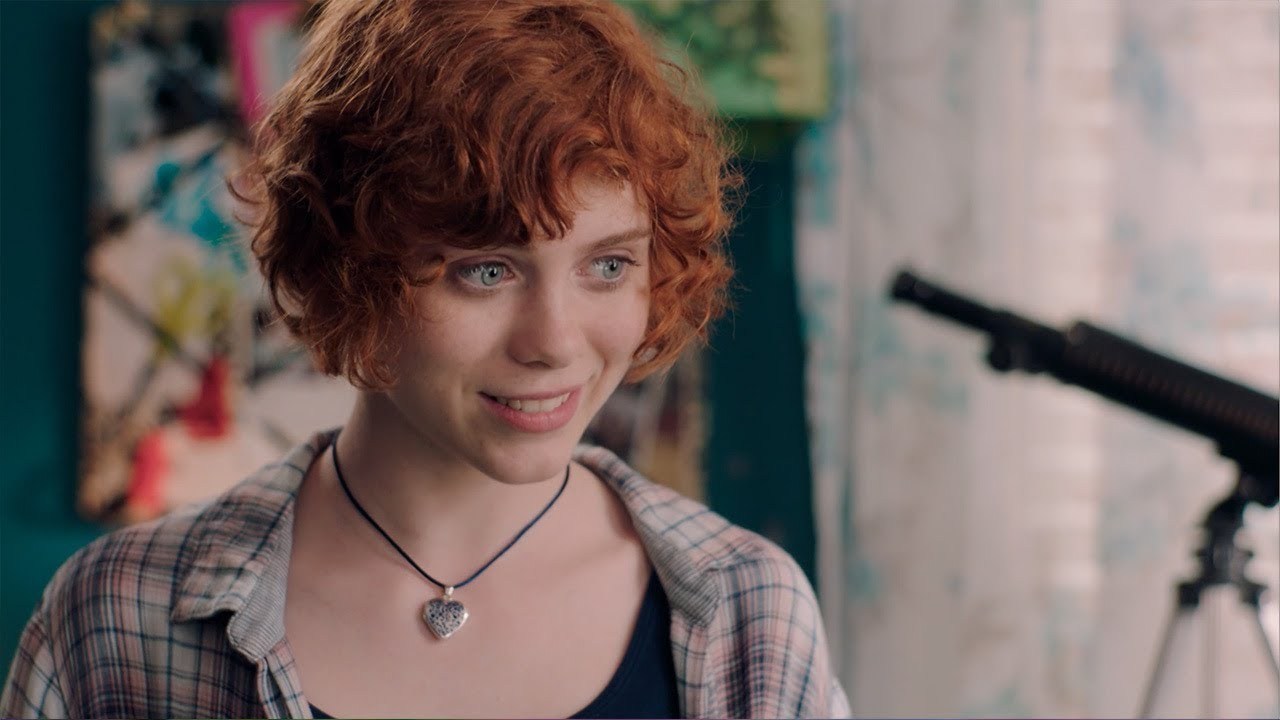
MARCH 15: Nancy Drew and the Hidden Staircase (dir. Katt Shea) – Rotten Tomatoes synopsis: “After the death of his wife, Carson Drew (Sam Trammell) decides to leave Chicago behind and make a fresh start with his daughter in River Heights. But for 16-year-old Nancy Drew (Sophia Lillis), life in a small town is mighty dull. She longs for excitement, adventure, and the chance to make a difference. Nancy gets that opportunity when she is asked to help solve the ghostly activity at the Twin Elms mansion. Can she help explain the creaking footsteps, exploding lightbulbs and the ominous creature? Is it the handiwork of high-school bully Derek Barnes (Evan Castelloe)? Or is it possible that the ghost of original owner Malcolm Colfax is back for revenge? Recruiting her best friends George (Zoe Renee) and Bess (Mackenzie Graham), along with local ‘mean girl’ Helen (Laura Wiggins), Nancy Drew is on the case!”
MARCH 15: Wonder Park (dirs. Jason Feiss, Robert Iscove and Clare Kilner) – CinemaBlend synopsis: “Wonder Park tells the story of a magnificent amusement park where the imagination of a wildly creative girl named June comes alive. One magical day, June is running through the woods to find her way home where she discovers an old rollercoaster car and climbs inside. She suddenly finds herself in Wonderland, an amusement park she had created in her mind and put aside. All of her rides and characters are brought to life but are falling into disarray without her. Now, with the help of her fun and lovable park characters, June will have to put the wonder back in Wonderland before it is lost forever.”

MARCH 20: Buddy (dir. Heddy Honigmann) – Film Forum synopsis: “Heddy Honigmann, who has had retrospectives at MoMA and the Centre Pompidou, is the ne plus ultra of documentary filmmakers. With Buddy, she turns her unerring eye to the relationship between dogs and people. Forget the ubiquitous ’emotional support dog,’ everyone’s favorite companion. These six pooches do amazing things: they open and close drawers, turn their mistress over in bed, remove paper from the computer printer, push a syringe into flesh, put on a woman’s socks, and pull up her blanket. They soothe a veteran with PTSD and a severely autistic child. With characteristic reserves of warmth and humor, Honigmann gives the dogs equal face time – a film about love, courage and trust, both human and canine.”

MARCH 22 (in theaters & on VOD): Out of Blue (dir. Carol Morley) – IFC Films synopsis: “The hunt for a killer draws a detective into an even larger mystery: the nature of the universe itself. Mike Hoolihan (Patricia Clarkson) is an unconventional New Orleans cop investigating the murder of renowned astrophysicist Jennifer Rockwell (Mamie Gummer), a black hole expert found shot to death in her observatory. As Mike tumbles down the rabbit hole of the disturbing, labyrinthine case, she finds herself grappling with increasingly existential questions of quantum mechanics, parallel universes, and exploding stars—cosmic secrets that may hold the key to unraveling the crime, while throwing into doubt her very understanding of reality. Awash in dreamlike, neo-noir atmosphere, this one-of-a-kind thriller is both a tantalizing whodunnit and a rich, metaphysical mind-bender.”

MARCH 22: Roll Red Roll (dir. Nancy Schwartzman) – The Hollywood Reporter’s Tribeca Film Festival review by Frank Scheck: “If there’s a more hideous phrase in the language than ‘rape culture,’ one would be hard-pressed to name it. Nancy Schwartzman’s documentary Roll Red Roll examines the phenomenon through the prism of the infamous 2012 rape of a teenage girl by the star players of a Steubenville, Ohio, football team. The film, which recently received its world premiere at the Tribeca Film Festival, documents the case in such a powerful fashion that your feelings of outrage will persist long after the movie is over.
“What’s truly scary about the incident at the film’s center is how many similar but ignored cases must exist. This one, which took place in a town whose biggest claim to fame is being the birthplace of Dean Martin, came to light mainly through the endless social media posts of the perpetrators and their enablers that exposed the horrific crime.
“Roll Red Roll begins with audio excerpts from a sickening recording in which we hear male high-schoolers laughing while making such comments as ‘She is so raped right now!’ and ‘This is the funniest thing ever!’ They’re talking about a girl identified only as ‘Jane Doe,’ who went to a series of parties, became increasingly inebriated and was sexually assaulted. We’re then introduced to the lead investigator on the case, Detective J.P. Rigaud, and the primary suspects, high school football players Trent Mays and Ma’lik Richmond, who were arrested a week later.
“The local police weren’t the ones to break the case, however. It was a crime blogger named Alexandria Goddard who caught wind of it and exhaustively combed through the students’ social media postings and republished the most damning of them online, including screen captures of many of their tweets. For her troubles, Goddard was reviled by the town, which closed ranks around its star football players, and was sued for defamation of character. Her work came to the attention of Rachel Bissel, an investigative reporter for the Cleveland Plain Dealer, whose stories about the case brought it to national and international attention.
“The film includes extensive excerpts from the videotaped interrogations conducted by Rigaud with a number of students as well as the football coach, who seems more intent on protecting his players than getting to the truth. He tells the detective that he didn’t suspend Mays and Richmond because it would have made them look guilty.
“The hacking group Anonymous later became involved, blasting the cover-up being perpetrated by the town and publishing a leaked video online featuring several of the male students making fun of the victim and cackling over what happened to her. The group subsequently organized a protest rally in which several women revealed their own harrowing tales about being raped.
“The filmmaker relates the story with compelling tension, with a few surprises toward the end, including the revelation of charges being filed against four Steubenville High School officials involving an earlier incident that had gone unreported and an incident from blogger Goddard’s past that provides insight as to her passionate feelings about the case.
“Roll Red Roll, the title of which refers to the slogan of the high school football team about which the town seems ridiculously obsessed, doesn’t simply elucidate the facts behind the particular case at its center. It provides a powerful depiction of the blame-the-victim culture that has so long dominated the national discussion about rape and which only now thankfully seems to be receding. Although there’s clearly a long, long way to go.”
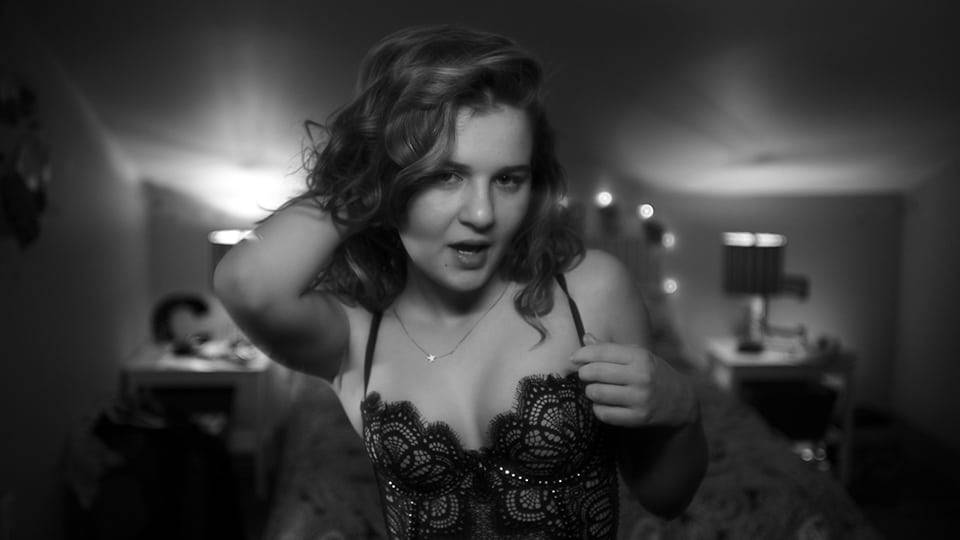
MARCH 22: Slut in a Good Way (dir. Sophie Lorain) – Tribeca Film Festival synopsis by Matt Barone: “Charlotte (Marguerite Bouchard) couldn’t be happier about her relationship with her handsome boyfriend (Alexandre Cabana). But during a moment of intimacy, the teen’s beau drops a bomb on her: He’s gay. She is crushed. So, along with her best friends—the sassy spitfire Mégane (Romane Denis) and the quieter Aube (Rose Adam)—Charlotte seeks distraction at a toy store. There, the three girls are charmed by the young, male employees and quickly land jobs alongside them. Charlotte, still heartbroken, starts flirting—and having casual sex—with a few of her new coworkers. Initially, she loves her new freedom. Others around her, however, feel differently, leading them to smear Charlotte’s name and challenge her newfound sexual empowerment.
“With the vibrant and hilarious Slut in a Good Way, filmmaker Sophie Lorain, a veteran actress in her native Quebec, reframes the raunchy teen-comedy formula with an honest, adolescent woman’s point-of-view. The edgy comedy and finely drawn characters, both courtesy of Catherine Léger’s razor-sharp script, allow Lorain to masterfully explore the complexities of young love and the double standards placed on women of all ages. As provocative as its title suggests, Slut in a Good Way pulls no punches.”

MARCH 27: Working Woman (dir. Michal Aviad) – Toronto International Film Festival synopsis by Jane Schoettle: “There has never been a better moment for a film like Michal Aviad’s Working Woman. Set in Jerusalem, this crisp, absorbing drama tracks an all-too-familiar trajectory in which female ambition is met with male abuse of power.
“With three young children to look after and her husband’s restaurant struggling to break even, Orna (Liron Ben-Shlush) feels lucky to have landed an assistant position with a luxury real-estate development firm. She quickly proves her worth and is rewarded with a lucrative promotion.
“Yet Orna’s advancement is accompanied by unwanted advances from Benny (Menashe Noy), her boss. Benny’s transgressions are initially insidious — a suggestion regarding her clothing or hair — and incremental enough that it doesn’t immediately occur to Orna that she’s ensnared in a Faustian pact. With every professional triumph Orna is forced to contend with another, more aggressive come-on. She needs to tell someone — but will others feel she is complicit?
“Much of the brilliance of Working Woman is located in its details, which imbue the film with vital complexity. Orna is smart and resourceful, but she’s no superhero; she has doubts and fears. Benny can be smug and entitled, but he also makes Orna feel genuinely valued in a way that her husband, absorbed with his own stress, does not.
“The good news is that while Aviad has crafted a realistic, layered narrative, she also manages to leave us with more than a kernel of optimism.”

MARCH 29: The Brink (dir./DP: Alison Klayman) – Magnolia Pictures synopsis: “When Steve Bannon left his position as White House chief strategist less than a week after the Charlottesville ‘Unite the Right’ rally in August 2017, he was already a notorious figure in Trump’s inner circle, and for bringing a far-right ideology into the highest echelons of American politics. Unconstrained by an official post — though some say he still has a direct line to the White House — he became free to peddle influence as a perceived kingmaker, turning his controversial brand of nationalism into a global movement. The Brink follows Bannon through the 2018 mid-term elections in the United States, shedding light on his efforts to mobilize and unify far-right parties in order to win seats in the May 2019 European Parliamentary elections. To maintain his power and influence, the former Goldman Sachs banker and media investor reinvents himself — as he has many times before — this time as the self-appointed leader of a global populist movement. A keen manipulator of the press and gifted self-promoter, Bannon continues to draw headlines and protests wherever he goes, feeding the powerful myth on which his survival relies.”
MARCH 29: Fast Color (dir. Julia Hart) – RogerEbert.com’s SXSW review by Brian Tallerico: “One of the big stories on the first Saturday of the 2018 SXSW Film Festival was that the biggest theater at the event featured four films in a row that were introduced by their female directors. Uncoincidentally, I was there for all four—having already covered the fourth, Blockers, in a separate review—and it was a rollercoaster of a day in terms of quality, but there was a definite buzz in the spacious, historic Paramount Theater. Most refreshingly, all of the films—even Blockers—felt like the product of confident, empowered voices that had something to say that you might not have heard before. One film in particular reworks arguably the most glutted genre of the modern era into something new, empowering, and original. It’s a remarkable, important piece of work.
“That film is Julia Hart’s stunning Fast Color, a tightwire-act of a film that’s ostensibly a superhero origin story while also feeling like it’s about us mere mortals at the same time. Fast Color isn’t quite post-apocalyptic but it’s near-apocalyptic. Hart’s script (co-written with Jordan Horowitz) imagines a world in which it hasn’t rained in years. We finally did it. We broke the planet. Crops have died. Water is more expensive than lodging. Everything looks broken. In this world, we meet Ruth (the radiant Gugu Mbatha-Raw), a woman on the run. She has bloody marks on her wrists as if she’s been restrained, and she hides from human contact. She checks into a seedy motel in the middle of nowhere and has a terrifying seizure. As she does so, a part of the world that never has earthquakes feels the plates shift.
“It turns out that Ruth comes from a legacy of women who have what could be called superpowers. On the run from people who want to exploit her powers—the authorities/chase aspect of the film reminded me of Midnight Special at times, another emotional sci-fi movie that I love—Ruth makes her way to a home she fled years ago, where we meet her mother Bo (Lorraine Toussaint) and Ruth’s daughter Lila (Saniyya Sidney). We learn that Ruth left when her powers became too dangerous for her stay, keeping the seizures at bay with drugs and booze. And we learn that Bo and Lila have powers too.
“As a parent of three, I can attest that children create a stunning mix of empowerment and abject fear, often in the same moment. As cheesy as it sounds, you can look into your child’s eyes and feel like you can do anything. They will give you the strength to do anything. You can also be stricken with fear that you will do something wrong. That you will misuse this power you have been granted. In a nutshell, this is Ruth’s story—that of the power given her by motherhood and how she runs from it, only to realize how important it is in the end. As Hart pointed out in her Q&A, and the film makes crystal clear, Fast Color is a superhero film about creation and not destruction. Nearly every MCU movie ends with a massive battle that takes hundreds of lives and destroys cities—destruction for arguable salvation. Fast Color imagines a world in which power heals and creates instead, and it’s beautiful to behold.
“Fast Color comes from a lineage of masterful films that uses sci-fi to tell relatable, emotional stories, but it also feels remarkably fresh. Much has been written recently about how films like Wonder Woman and Black Panther have redefined the superhero genre and forever changed the landscape. My hope is that enough people see Fast Color to include it in the conversation in the same way.”
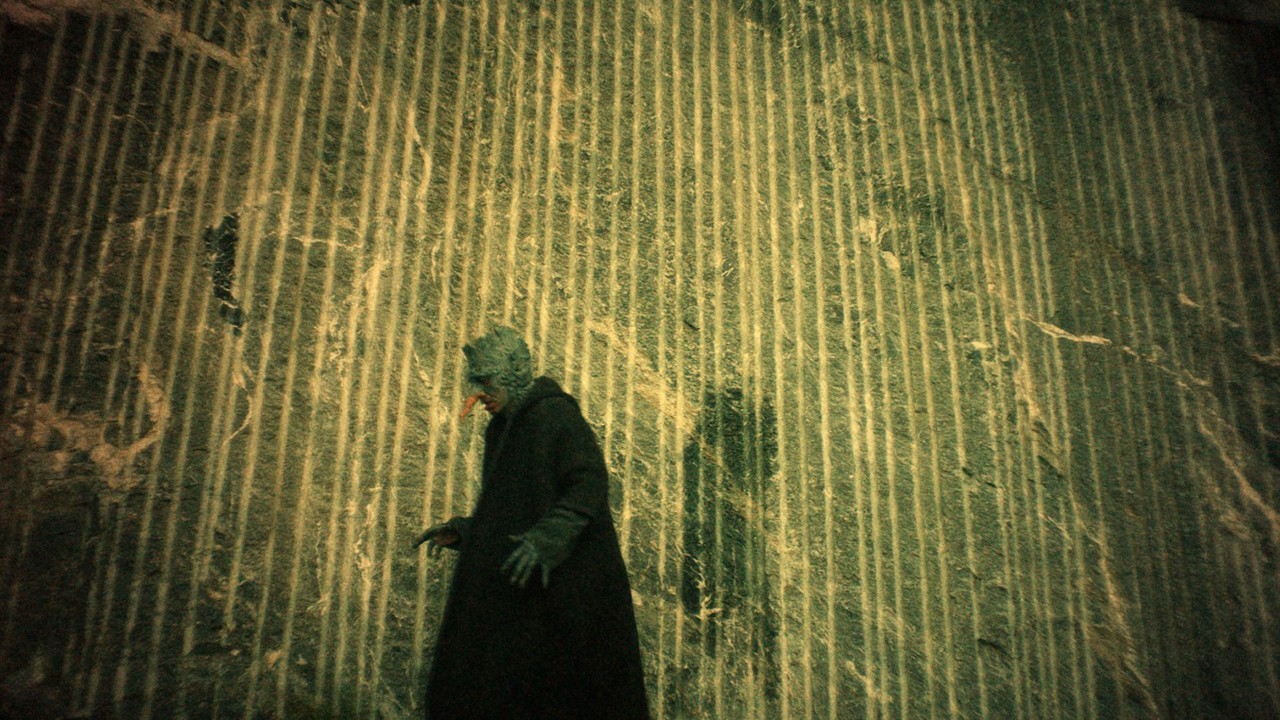
MARCH 29 (in theaters & on VOD): The Field Guide to Evil (dirs. include Severin Fiala & Veronika Franz, Katrin Gebbe and Agnieszka Smoczynska) (DPs include Meryem Yavuz) – Seattle International Film Festival synopsis: “From the producers of the cult horror anthology series The ABCs of Death comes a phantasmagorical exploration of myths, lore, and folktales featuring nine of the most talented international filmmakers working in genre film today. Revealing the stories created to explain mankind’s darkest fears, The Field Guide to Evil tasked each talented director with revealing a folktale that has captivated and frightened their homeland and interpreting it in their own unique style. Representing Austria are Veronika Franz and Severin Fiala (SIFF 2015’s Goodnight Mommy), who tell of an ancient demon that punishes those who engage in the cardinal sin of forbidden love. Agnieszka Smoczynska (SIFF 2016’s The Lure) presents Poland’s ‘The Kindler and the Virgin,’ grotesquely illustrating a man’s quest for power, while Calvin Reeder (The Rambler) reveals America’s cannibalistic humanoids known as ‘Melonheads.’ India’s Ashim Ahluwalia (Miss Lovely) takes a black-and-white journey inside a palace of horrors, while British-born, Hungary-based Peter Strickland (The Duke of Burgundy) tells a fetishistic story of lust and envy in the style of a silent film made using 1960s Kodachrome film stock. Finally, there are twisted tales from the depths of Hell that feature a Christmas goblin from Greece’s Yannis Veslemes, a mouse demon from Germany’s Katrin Gebbe, and a devilish goat from Turkey’s Can Evrenol.”

MARCH 29 (LA), APRIL 2 (on digital & VOD): In Reality (dir. Ann Lupo) (DP: Nadine Martinez) – Austin Film Festival synopsis: “Ann (Ann Lupo) is consumed by the fantasy of finding true love, but just when she thinks she’s found it, she is friend-zoned. The disappointment of rejection sends her into an obsessive downward spiral that tests the limits of her sanity and the strength of her closet friendship. In order to reclaim her bearing on reality, she confronts her overgrown fantasies by making a film about the experience. The result is a vulnerable, hilarious, and vibrantly stylized investigation of love.”

MARCH 29: A Vigilante (dir. Sarah Daggar-Nickson) – Den of Geek’s SXSW review by David Crow: “There is something tired about the vigilante fantasy, that often masculine and oh, so American dream of rugged individualism aggressively exercising its Second Amendment rights to act mighty. In the 1970s, it might have felt like a cynical escape from helplessness, but today it often resembles a delusion clung to by those who refuse to help their fellow man—or woman. This is why Sarah Daggar-Nickson and Olivia Wilde’s A Vigilante packs such a subversive punch. Not only does first-time writer and director Daggar-Nickson reimagine a reductive reverie into one of harrowing, feminine empowerment, but she does so in a way that is wary of violence, even while using it to defang the type of toxic masculinity that has long wallowed in all those Death Wish sequels.
“By fixating on a captivating and utterly ferocious turn by Olivia Wilde as a woman who tries to do to abusers in a single visit what they do to their wives and children over a lifetime, there is an intimate sorrow and authenticity to the film that intentionally deflates any attempts at popcorn thrills. Instead it finds something rawer and more challenging, especially when the limbs actually start to snap, and the fantasy of revenge stops feeling so abstract.
“In the film, Wilde plays Sadie, a woman who is haunted by a past that remains obscured for most of the picture’s running time, and yet is immediately understandable and unsettling. You can know her story by simply studying the scars and burn marks on her back, or the fury on her face. When Sadie tells the first man she forces on-screen to sign over his house and bank account to his wife that ‘I want to kill you,’ there is no doubt in the audience’s mind that she is telling the truth.
“Sadie was a victim of domestic abuse, attacked and dehumanized by her husband (Morgan Spector), who was a survivalist that beat his wife and son before disappearing into the wilderness. With nothing left to live for, Sadie found solace and eventually a purpose by sharing her grief with other survivors of domestic abuse in group therapy. In turn, she gets the idea to use her own survivalist training to channel her anger against any men who abuse their wives and children. She won’t kill them, but she’ll certainly put the fear of death into them, as they had done to Sadie and so many like her over generations.
“All of this has the obvious hallmarks of an action-thriller fantasy, and while the movie certainly reaches for taut suspense by its third act, the picture avoids every inclination to tell a straightforward piece of escapism. Sadie’s story is revealed non-chronologically and via an intimate character study that keeps the camera mostly glued to Wilde’s eyes. Violence is brutal, ugly, and often out-of-frame. And rather than being driven by plot, A Vigilante is propelled by Wilde’s intense gaze, whether toward her past or the board she is about to smash over a lecher’s head.
“In her best film work since Meadowland, Wilde is practically hypnotic as a woman who is too human to be a superhero, but may yet develop the eventual cult following of one. Unglamorous and devoid of makeup and pretension, Wilde’s performance is often sparse and minimalist, just like her film, which details her anger and anguish in equal measure. The picture defies the well-worn vision of a ‘lone gunman’ making a difference by taking a more feminine approach at understanding its heroine. She finds strength in community and culture via talking things out in a quietly believable support group, which includes a warm Tonye Patano as the counselor. We also live with the bruises and pain that lingers on Sadie; she may be stoic while on the hunt, but the movie is more interested in following her home as she has to cope with the aftermath.
“When the sequences of brutality come, they’re often visceral but again more focused on how it effects the character. The film opens with Sadie in makeup and a wig coldly dealing out punishment to a husband who she threatens will die if he ever comes near his (soon to be) ex-wife again. And it ends on a purely savage and almost elemental showdown, but in between the violence is a blur that is more of an extra texture in the film’s portraiture instead of its focal point.
“Narratively, A Vigilante misses the full cohesion that often bedevils first-time films, including an overreliance on unveiling Sadie’s precise motivations almost exclusively through conversations in group. The obvious intention is to recreate the experience of hearing survivors grapple with their grief, but the film’s ending thus feels somewhat disconnected with much of the rest of the picture as a consequence. Some of the emphasis also being on how Sadie interprets the world causes it to be unclear what is happening out of frame during several crucial moments. However, these flaws that trouble many other first-timers at film festivals are largely smaller imperfections in a movie that is soberly and unflinchingly of our moment and has a very sharp axe to grind—one that finds its target too.
“As the kind of movie that is sure to make the blood boil for those who’d call abusers men of ‘true integrity and honor,’ A Vigilante is an unsparing rebuttal tailor-made for our time, and sadly all times. It is easy to seek out for the wish fulfillment, but the mark it leaves is painfully real.”


